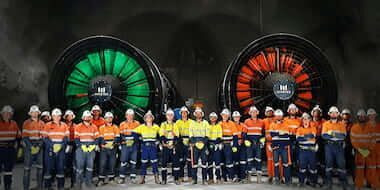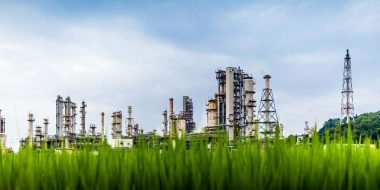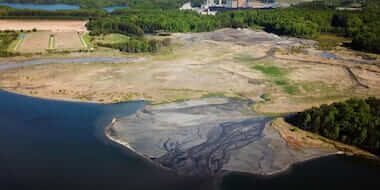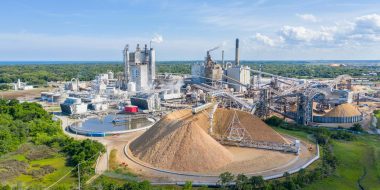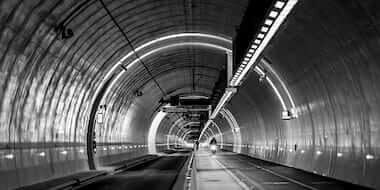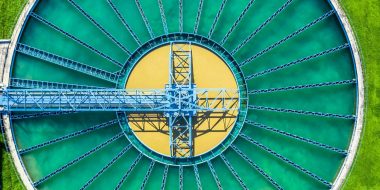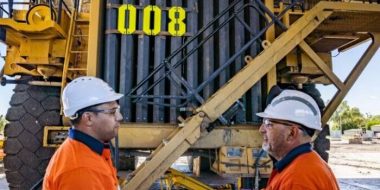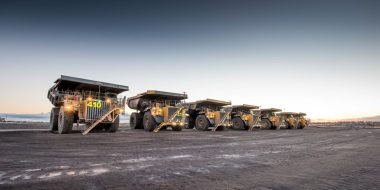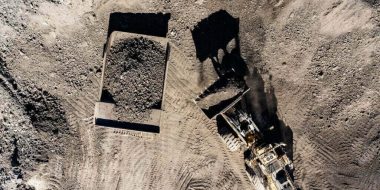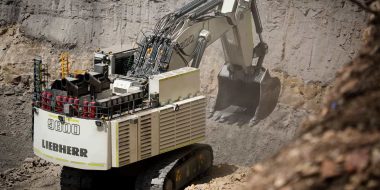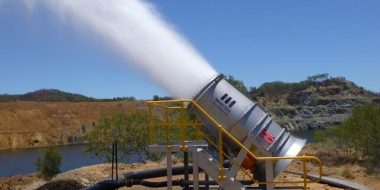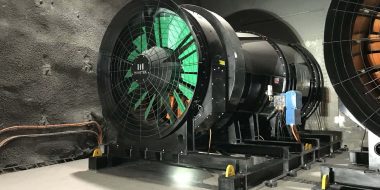Choosing a mine dewatering system is often a complex process with multiple solutions on the market, and unique site aspects to consider. In the vast mining landscape, water management plays a pivotal role in operations, therefore selecting the appropriate dewatering system is a critical decision.
Navigating the myriad of dewatering options available is a large task. However, with a clear understanding of your specific needs, environmental considerations, and the latest advancements in dewatering technology, you can choose a solution that best suits your site needs with optimal efficiency, cost-effectiveness, and sustainability.

Mine dewatering systems.
When the incorrect or inefficient dewatering system is implemented, the negative repercussions can be far-reaching and multifaceted. The consequences extend far beyond mere inconveniences; they encompass wasted time, financial costs, operational disruptions, compliance challenges, and elevated risks.
Wasted time becomes evident as the inefficient dewatering system struggles to meet the demands of the mine site, causing delays in critical processes. The financial costs incurred can be substantial, stemming from maintenance, repairs, and potential replacements required for an ill-suited system. Operation downtime amplifies these costs, leading to lost productivity and missed opportunities. Regulatory non-compliance can expose the organisation to penalties and reputational damage.
Moreover, the installation of an unsuitable dewatering solution can escalate operational risks, potentially causing environmental harm, equipment damage, and safety hazards. Therefore, choosing the right dewatering method becomes not just a matter of preference but a strategic action for industrial facilities seeking efficiency, compliance, and risk mitigation.
This article addresses the intricacies of selecting the best dewatering solution for your industrial application by unpacking 5 common scenarios faced by mining operations globally. Helping you to make informed decisions that align with your objectives and ensure smooth, uninterrupted processes.

Scenario 1a: Reducing inflow to a water treatment facility; Lowering the existing storage levels.
This coal mine has an existing wastewater treatment facility with excess inflow due to both an optimisation of resource processing, and an increase in rainfall. The current facility is not able to keep up with the amount of water on site and needs to dewater their coal ash pond.
Dewatering options.
The site is considering the following water management solutions:
- Reducing the water in their existing storage ponds.
- Building a new water treatment facility.
Considerations for dewatering.
The site needs to find the best solution for reducing the water levels in their existing storage and processing facilities. They need to consider what will be the most effective and efficient evaporation solution that meets their sustainable and long-term goals.
If expanding the facilities, CAPEX and OPEX costs, land availability and regulatory approvals become important factors in the decision-making process.
Minetek as the solution.
Minetek Evaporators, implemented as part of a hybrid water strategy, are an effective solution to lower the existing water volume.
2 x 600/300 Minetek Evaporators can comfortably evaporate an Olympic-sized pool in 24 hours.
An Olympic swimming pool holds 2.5ML of water. 2x Minetek 600/300 Evaporators on average evaporate 3.24ML/24 hours. This is equivalent to 432,000 gallons (1.96ML) evaporated per day.
Considering alternative solutions, Minetek mechanical evaporators are the best solution because:
- Mechanical Evaporators run at approx. 50% evaporation efficiency, compared to only 4% for most sprinkler models.
- Alternative solutions like irrigation or sprinklers require higher OPEX costs for spare parts and maintenance.
- Other solutions do not remove the water but rather transfer from one place to another.
As a demonstrative example, if the current water storage facility carried 50 ML over a 100m x 100m space, 2 x 600/300 Evaporators operating 24/7, at an evaporation efficiency percentage of 50%, would evaporate 6.48% of the dam’s water volume (3,240m³) every single day.

Scenario 1b: Expanding an existing water treatment facility; Building a new water treatment facility.
The site is deciding if building a second water treatment facility will be the best solution to solve excess inflow.
A new water treatment facility requires the following elements:
- Space for installation.
- Operators to run the plant.
- Large upfront CAPEX costs.
- Large ongoing OPEX costs including spare parts and maintenance, operator wages and treatment chemicals which can cost upwards of $3000.00 per day depending on the size of the facility and water requirements.
- A large planning and approval stage.
- Waste stream that needs to be dealt with.
This option is high cost and high involvement, but only processes 5-10ML per day of treatment, rendering it a much less effective solution for managing excess water.
Minetek as the solution.
Minetek Mechanical Evaporators are a far simpler solution than building a brand-new water treatment facility.
Benefits of Mechanical Evaporation:
- Small infrastructure footprint.
- Controlled through automated environmental monitoring.
- Low CAPEX costs compared to other solutions in the market.
- Low OPEX costs with minimal parts required, and robust engineering for minimal maintenance.
- A short planning and approval stage.
- A team of engineers and project planners to scope and engineer even with sudden requirement changes.
- Not susceptible to changes in water quality.
This is a low cost, low involvement option. 3x 600/300 Evaporators running at 50% efficiency evaporate 4.86ML per day, the equivalent of an average size treatment facility.
Comparing the costs of treatment and evaporation.
A side-by-side comparison of costs, with both options running 24/7, 365 days per year.
Minetek’s Mechanical Evaporator units evaporate the same volume of water for on average $0.20 per cubic meter, compared to often more than $2.00 per cubic meter for a water treatment facility.
This includes installation costs, ongoing costs, additional treatment additives, power to run, labour costs and maintenance. Therefore, water evaporation is a more cost-effective solution than water treatment.

Scenario 2a: Pit dewatering; to extend production.
The site has discovered a new resource in an existing pit. Access to this resource would extend the LOM another 15 years, however the pit is filled with water that must be removed. The site is now scoping how to remove the current water from the pit, as well as develop a new LOM plan for the additional production timeline.
There is a 2-year window to dewater the pit before the existing resource is depleted and production will halt.
Mine dewatering system options.
The site is considering the following dewatering solutions:
- Pumping to discharge into another storage location if available.
- Water treatment and discharge if permitted.
- Dewatering through chemicals, geotextile bags or evaporation.
- Construction of a new dam to store the water.
Considerations for determining the appropriate dewatering solution.
- Time
- Water quality
- Water management
Time.
The solution needs to be completed within a two-year period. This can involve moving the water to another location to be dealt with at a later point in time.
Water quality.
The water contains a lot of sediment, (high TDS) so the water will need to be treated first, making discharge a costly option. The site would need to seek approval, which is unlikely without an extreme weather event.
Water management.
The site has an existing dam for storing water. Pumping and adding the water to the existing infrastructure is the quickest and easiest solution. However, this will cause a negative flow whereby the current water storage facilities will be close to maximum capacity. Dewatering the tailings facilities becomes the next problem for the site to solve.
Minetek as the solution.
Due to the factors above, the site is choosing to pump the water into an existing pond, then implement evaporators as part of an ongoing water management strategy. A 600/300 Evaporator can manage high TDS with a flow rate of up to 600 gallons per minute (135m³ per hour), making this solution feasible even with the high volume and low water quality.

Scenario 2b: Mine dewatering for LOM and closure planning.
The site has calculated that in order to close the mine in 15 years, the water level in the existing water storage facilities will need to be reduced by 500m³ per hour (12,000m³ per day) for the entire duration of the 15 years.
It is also critically important that the site dewaters the existing storage facilities, as the site has chosen to pit dewater by pumping into the existing tailings, pushing the water levels closer to critical. A successful water management strategy is needed for mine remediation and rehabilitation.
If left unmanaged, the site would be dealing with an excess of 65 million cubic meters of water, which not only aggravates risk due to extreme weather events or dam collapse, but also results in non-compliance, and an expensive and lengthy mine closure.
Waiting until mine closure would result in a catastrophic water problem to solve, so the site needs to build a sustainable long-term water management plan to ease the burden during mine closure.
Building a hybrid solution.
Water treatment isn’t a feasible solution to process the entire volume of water, as it would cost tens of millions of dollars over the LOM.
Instead, the site has decided to use a hybrid water management system, installing Minetek Evaporators. By installing 12 x 600/300 Evaporator units, the site spends 20% of the cost for a pure water treatment solution.
12 x 600/300 evaporators can evaporate 19.44 ML per day or 19,440m³ of water, exceeding the site’s required reduction of 12,000m³ cubic per day.
The Evaporators will leave the site with a very small but concentrated body of water to deal with at the closure of the site. A much smaller and cost-effective treatment plant can be installed to process the remaining water.

Scenario 3: Zero Liquid Discharge (ZLD) site.
The site is a recent development built in an area with a requirement that by 2035 all sites must be Zero Liquid Discharge (ZLD) to minimise damage done to the terrestrial (local) ecosystem. The area is significant, both environmentally and culturally, so breach of ZLD requirements carry large fines and shutdowns. The options for water management are highly restricted in the aim to prevent environmental contamination.
The site needs an easy, cost-effective, and long-term water management solution that also meets the regulation requirements.
ZLD options.
- Wastewater treatment
- Water recycling
- Brine concentration and evaporation
- Resource recovery
- Solid waste management and evaporation
Considerations.
This ZLD site is restricted from using the following methods:
- Direct discharge.
- Evaporation ponds may be restricted or minimised to prevent excessive water loss or potential groundwater and soil contamination.
- Surface impoundments may be restricted due to the risk posed on the environment caused by leaks or breaches.
- Unlined tailings storage facilities that may allow contaminants to seek into the surrounding soil.
In addition to these restrictions, the site is not allowed to use inadequate, inefficient, or outdated methods of treatment, recycling, or evaporation. They’re also required to strictly control any acid mine drainage (AMD) and storm runoff, as well as constantly monitor the impact on groundwater and soil.
Building a hybrid solution.
The site is considering a water treatment plant and irrigation to reuse the water as part of the land rehabilitation. However, as mentioned in the previous scenarios, a water treatment facility is costly. Even with a modern treatment plant that uses membrane filtration, chemical treatment, and disinfection, (which is typically more compact compared to traditional methods) a plant able to treat all the water on site would take up a significant amount of land.
Due to the cultural significance of the site, there are regulations around how much land can be impacted by water treatment facilities.
As with the previous scenarios, the site has discovered that a single evaporation pond, a small water treatment facility, and irrigation will be a holistic water management solution that’s cost effective, fits within the ZLD requirements, and is able to mitigate risk and control storm run off by always keeping water levels low.
Minetek as a sustainable solution.
Minetek’s Mechanical Evaporators are designed to fit within a sustainable water management system. The evaporation system forces high pressure water through specially designed and tested nozzles which atomize the water, forcing the droplets upwards into the atmosphere. Solids, salts, heavy metals, and contaminants fall back into the original water source. This system allows H2O molecules to return to the water cycle, while separating out any contaminants for later treatment.
Environmental Management System (EMS).
This proprietary system monitors and responds to environmental conditions in real-time. When switched to fully automatic mode, the system is governed by a weather station that monitors sun rise and set, relative wind speed, wind direction, humidity and temperature, system water flow and pressure. The environmental management system ensures the units will turn on and off to only be used when the wind direction and other environmental factors are ideal.
Automatic Angle Adjuster (AAA)
Working with the EMS system, the AAA will automatically adjust the angle of the units based on wind speed, allowing for operation in various weather conditions while maintaining full control of the plume.

In conclusion, choosing the best dewatering method for your mining operation is a crucial decision that can significantly impact the productivity, efficiency, and environmental sustainability of your site. In this article we’ve explored five distinct mining scenarios, each with its own set of challenges and considerations. From pit dewatering for extended production to ZLD sites, this article has highlighted the myriad of considerations and options available.
To delve even deeper into the specifics of dewatering and gain a comprehensive understanding of each methods advantages and limitations, download our PDF Ebook titled ‘Exploring dewatering techniques: A comprehensive comparison of solutions’. In this detailed resource, you’ll find an in-depth analysis of eight different dewatering methods based on volume, CAPEX, OPEX, operating requirements, mobility, lead time, maintenance requirements, infrastructure footprint and more.
